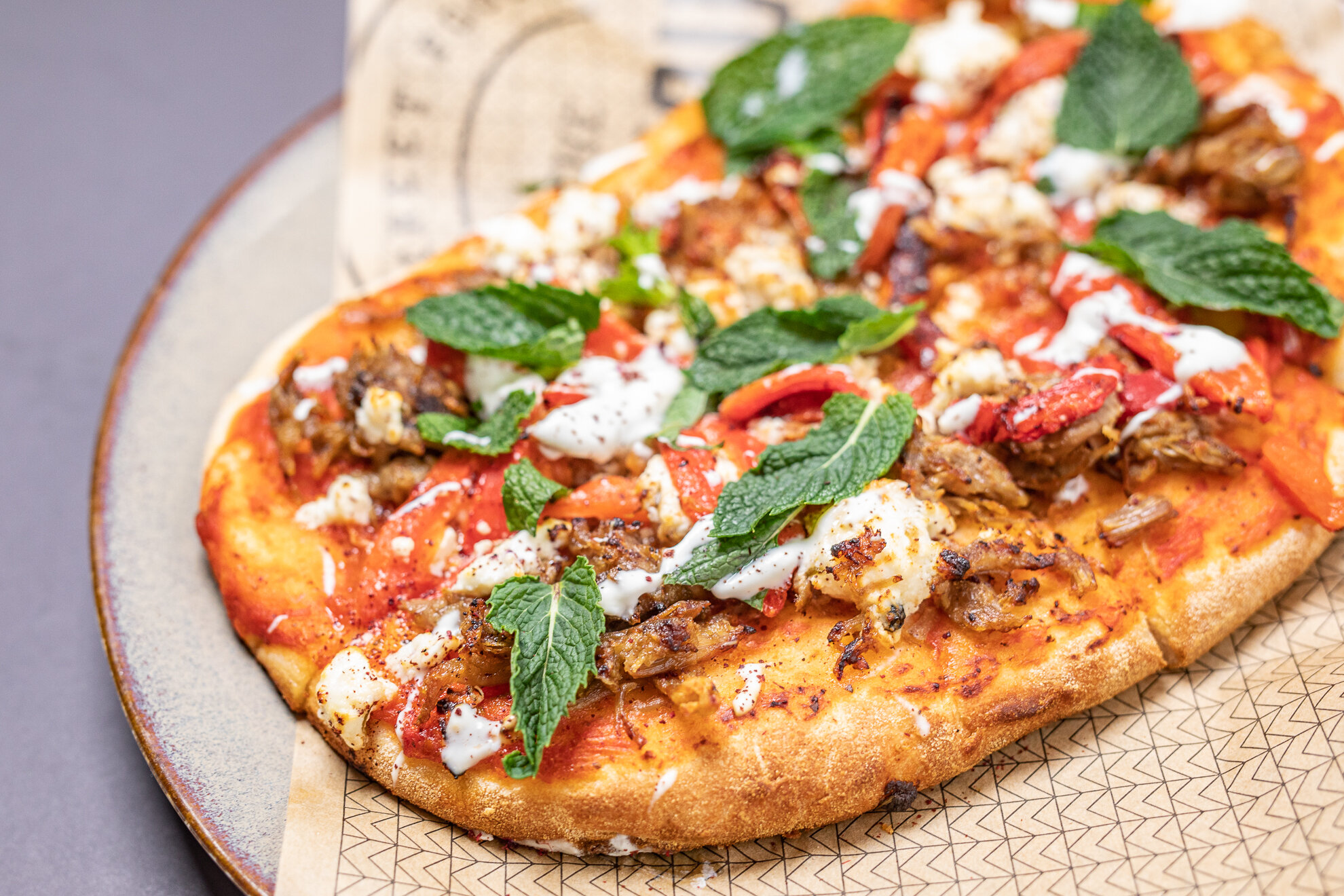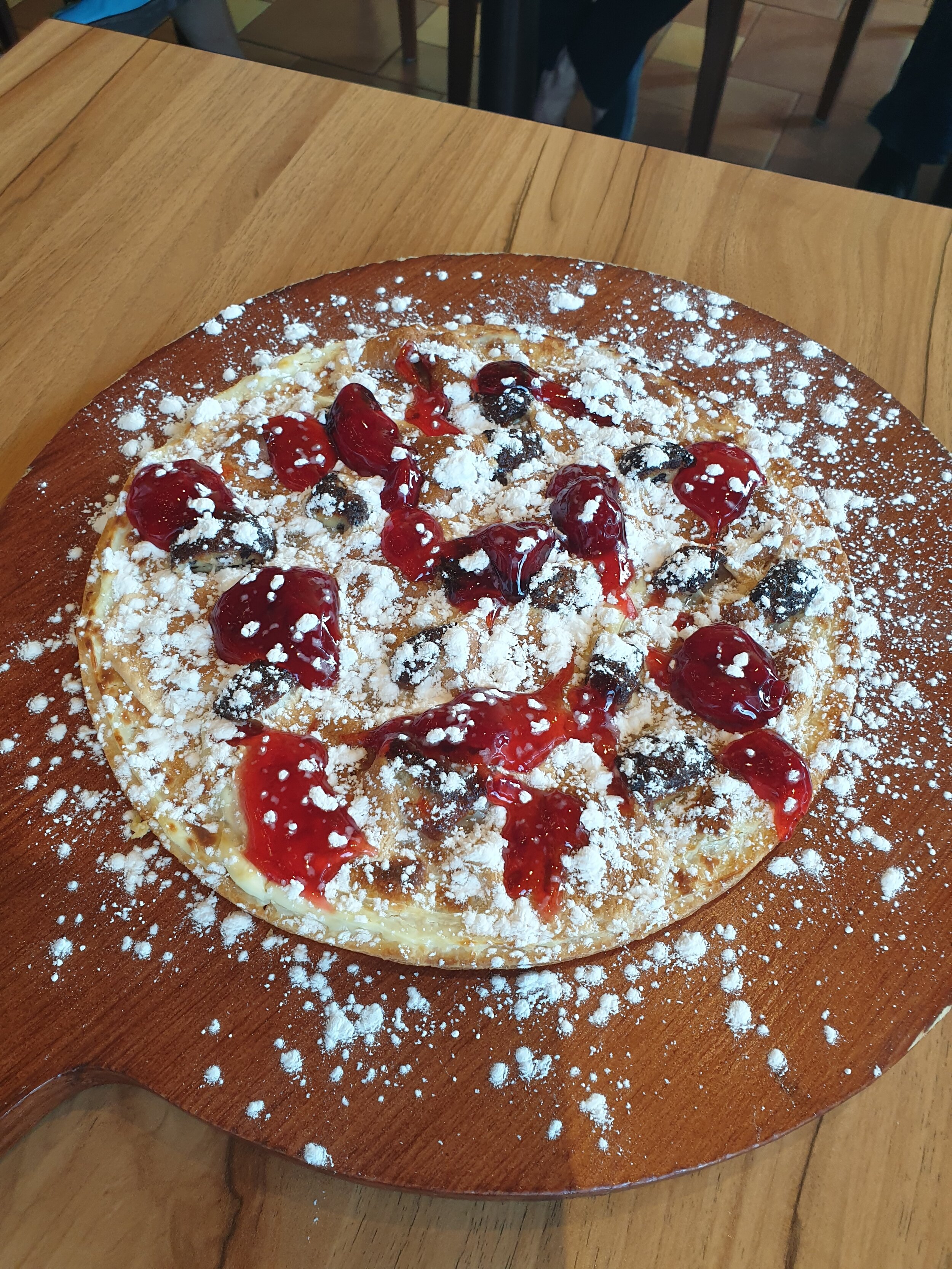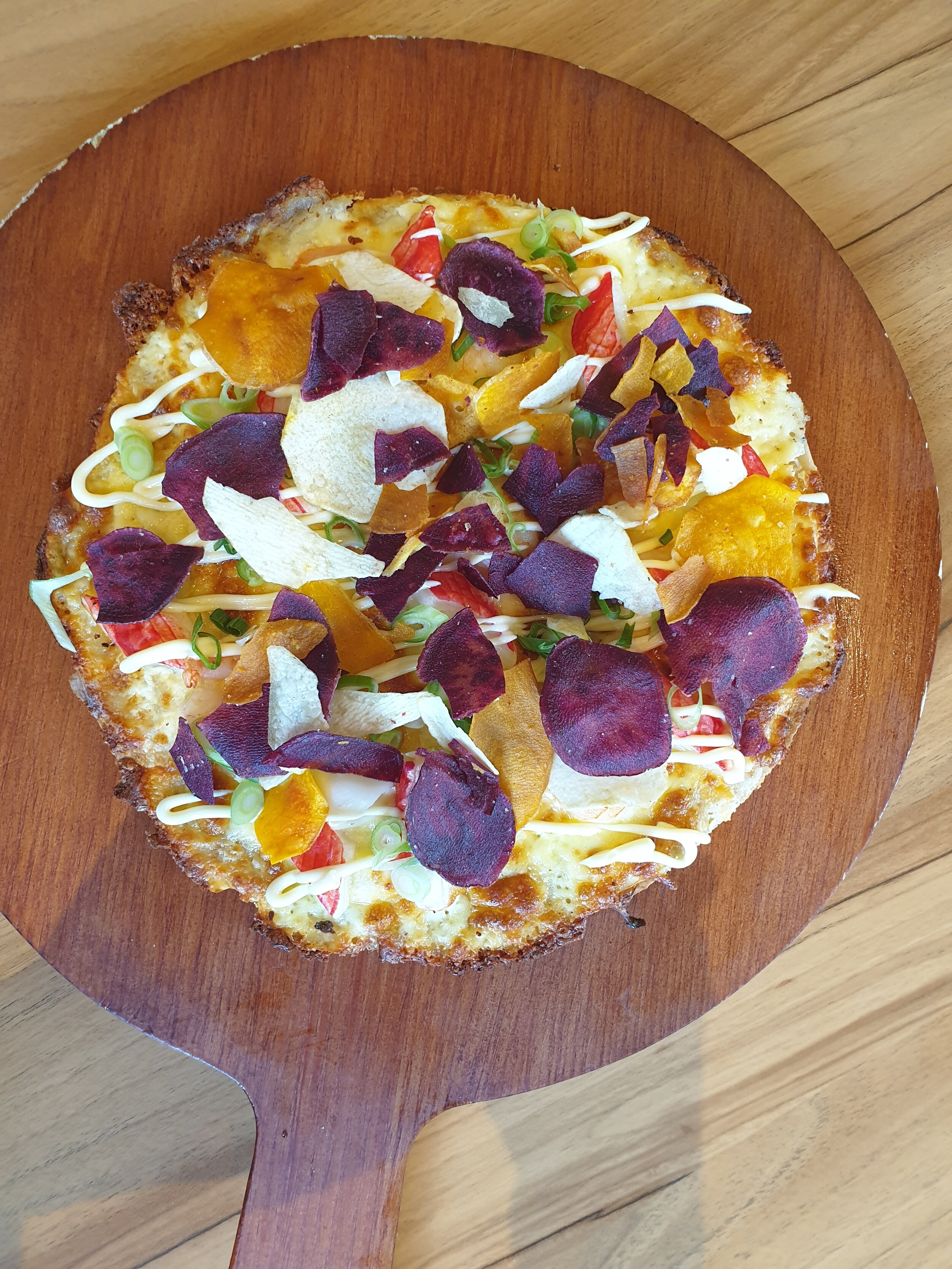Have profit will travel – offering on-trend pizzas
Pizza has never been more ‘on trend’ – having proven itself as an ideal takeaway and home delivery meal, easy to prepare and safe to transport, it’s no wonder that over the course of Covid lockdowns we’ve seen its takeup across all manner of foodservice menus. This solid profit maker has evolved far from its humble origins and today the category encompasses everything from top-end gourmet pizzas to value-driven QSR offerings.
“Pizza and pasta is comfort food, it’s something we associate with having a good time with friends,” says Gary Johnson, National Executive Chef for ALH Group which operates more than 340 hotels nationally. “This may be being driven by the fact that there’s more availability of authentic, quality ingredients which has certainly facilitated pizza and pasta’s introduction into more pubs and clubs.”
Gary argues that pizza and pasta typically delivers a strong profit margin. “If you look at your typical pub cuisine, you might sell a 150 day grain fed rib eye steak with chips and salad for $45 and that will give you about 50 per cent gross profit, but a pizza on a 200g dough base with around 120 or 150g of proteins and toppings will bring you a 75 per cent gross profit on a retail price of $20 to $22. So the affordability of the meals drive sales up, while at the same time you’re getting a better return.
“Go with the best quality ingredients you can afford, each and every time”
Asked what trends he identifies on the pub pizza menu, Gary says “Hopefully the death of the par-baked pizza base! There are some terrific suppliers today providing fresh or frozen bough ball pellets and they really are a cut above the par-baked bases of the past. There’s also some really innovative yeasts now being developed with these doughs. Sugo2 uses a yeast which can prove at as low as 10 degrees. There are some great sourdough balls available and vegan options as well. And because they come frozen, you can thaw them in fridge overnight and prove them for about an hour before you use them. I think hand-stretching is the way to go - if you put them through a machine or use a roller, you tend to knock a little too much air out of the dough - but if you hand-stretch them you keep that rustic flavour and authenticity.”
Gary says when it comes to pizza toppings, less is more – “go with the best quality ingredients you can afford, each and every time. Don’t compromise or use anything cheap and nasty or worse still, something you have to use up quickly. And remember water is the enemy of any pizza, so if you're putting roasted peppers that come pickled or in juice, make sure they're dry before going on to your pizza.”
He adds that with the assortment of produce available today, pizzamakers are spoilt for choice - “There’s some really good cheeses available, even truffle on pizza is just delicious and it’s gold to your vegan customers. I tend to go with luxury ingredients - little zucchini flowers or saffron are beautiful choices for toppings. And of course you can do some wonderful roasted vegies and great syrups that will go with any plant-based pizza.
“Truffle on pizza is just delicious and it’s gold to your vegan customers”
“Every pizza menu has a margarita, that’s a staple, and I always feel you can gauge the rest of the menu by the standard of the margarita - if that’s good, you can rest assured everything else is going to follow suit!”
Some ingredients are best added after cooking
Peter Wright, a longtime judge of pizza competitions both in Australia and internationally, argues that the largescale pizza QSRs are not where the pioneering is done in this category – “they’re too big to be on-trend. You need to look to the independents, that’s where you can see the envelope really being pushed. They’re using less dough and more toppings, garnishing pizzas with rocket and sliced cheese, shaved parmesan, fresh cut chilli and fresh herbs which go on the pizzas after they're cooked.
“And with the majority of pizzas being eaten at home right now, your pizza has to be able to travel – so remember some ingredients are best added after cooking. Even major players like Domino’s are now following the lead of the independent pizza innovators by promoting quality toppings like sliced beef, different chicken toppings and seafood combos. Once they start pushing, it puts the pressure back on the independents and that starts the cycle again so the independents go to the next step.
“It’s all about the value proposition – with pizza you can go from traditional all the way up to gourmet”
“I think as time goes on we’ll be seeing more post-cooking garnishes and drizzles, different flavoured mayos, barbecue sauces, all those sort of things drizzled on top of a pizza post-cooking. The variation across the markets is so massive – in my local area I can go to my neighbourhood pizza shop and get a pizza for $14, or half a kilometre away I can get one for $24 – and they’re completely different beasts. One has a slow cooked braised beef cheek, caramelised onion and taleggio, the other has salami, tomato and mozzarella. It’s all about the value proposition – with pizza you can go from traditional all the way up to gourmet, and if you want to go the gourmet route that’s fine, you simply have to make sure that the expense of it is justified by the ingredients. You can go basic or top end and the price can vary by up to 50 per cent - it's all about where you want to position yourself in the market.”
Carving out your own niche in the market
Alex Paterson, Operations Manager at The Ary Toukley on the NSW Central Coast, is about to go in a new direction with the club’s pizza offering. “We've had a look at our market locally and there’s a fair few pizza options and they're pretty generic and similar, so we've decided to go with a hand-crafted, rustic feel as a point of differentiation.
“I think it’s very important to carve out your own niche in the market and that authentic, Italian heritage feel is coming back. Our new executive chef Jason Stuart has a lot of experience in hand-stretching pizza dough, and that skill level is going to be put to good use! There’s actually a lot of skill in stretching dough without machines but it gives you a better result.
“That authentic, Italian heritage feel is coming back”
“Our new pizzas look unreal – and the bases are lighter and crisper. That then gives us the opportunity to go with fewer toppings but to use choices that will max out the flavour. We’re currently sourcing some suppliers to build up the new pizza menu as we speak. We’ve got a double deck oven and we cook our pizzas straight on pizza stones, which really crisps up the base - it's about three and a half to four minutes per pizza, which is pretty good.”
THE RANGE OF NEW PIZZAS USING HAND PULLED DOUGH AS DESIGNED BY THE ARY TOUKLEY’S NEW EXECUTIVE CHEF JASON STUART
When it comes to ingredients, less is more
Chef Adam Moore says pizza is “having a massive resurgence right now” and that when it comes to ingredients, less is more: “Start with a beautiful base and then build – I’ve even seen pizzas lately with no sauce, just slices of meat brisket, then caramelised onion on top. It may not even have cheese on it! There’s also a massive trend to plant based pizzas and premiumising them with lots of fresh ingredients. There are so many plant-based alternatives now, from plant-based salami and chorizo to plant-based cheese – and all that can go into your pizza.
“There’s a massive trend to plant-based pizzas and premiumising them with lots of fresh ingredients”
“The important thing to think about is flavour pairing – how your ingredients are working together to complement each other. And that’s not just the toppings – if you’re using a good sourdough base, for example, and cooking in a woodfired oven, that will impart a distinctive flavour that comes through the pizza. And if you don’t have a woodfired oven, you can even mimic that with today’s impinger oven technology – the impingers radiate heat from top to bottom and you can turn up the heat at the back end to impart that smokiness. You can also enhance that effect by cooking your pizza dough first, then putting the pizza through a second time with the toppings on.”
“If pizzas are going to be the main focus, you want to be able to create complementary menu items around them”
Recent innovations in pizza oven technology have also led to the development of smaller footprint ovens, making it easy for food kiosks and food court businesses with limited space to serve pizza. “You can everything now from about the size of a microwave right up to the size of a bus!” says former champion pizzamaker Bruno Gentile, who spent several years as a marketing manager for a major pizza oven supplier. “That’s been driven by the market – kitchens are getting smaller so chefs are wanting a smaller footprint for their equipment, so they can continue to provide the full scope of menu items to the customer.
“And chefs are getting smarter too - if pizzas are going to be the main focus on the menu, they want to be able to create complementary menu items around them as well. And these ovens can do everything from steaks to fish to vegies to pita bread. The newer conveyor ovens really can produce just as good as pizza as you would get out of a conventional wood fired oven - you can even cook direct onto the conveyor chain itself, which gives you a truer wood fired baked pizza flavour.”
To choose the best oven for your pizzas, Bruno recommends sounding out dealers and manufacturers. “You need to find what works for you – for example, how much volume are you going to be doing? If you’re only selling 30 pizzas a day, there’s no need to buy an oven that cooks 400 an hour! You also need to understand the flavour and texture that you’re trying achieve - are you going to make your own bases, buy par-baked bases?
“Ease of operation is another important consideration. If your staff have a low skill level don’t go putting in a high-tech oven. One of the big benefits of conveyor ovens is they’re pretty well foolproof – you put the pizza in one end and it comes out the other without the need for a lot of oversight in between.”
“Some of the new conveyors can cook pizzas within three minutes whereas the older ones can take up to eight”
Bruno adds cook times have changed a lot in recent years. “Everyone wants to cook pizzas faster so they can sell more during peak periods, and this is where it’s really important to understand your oven and make sure all the components are working correctly.
“Unfortunately a lot of the older ovens don’t have the same standard of technology - some of the new conveyors can cook pizzas within three minutes whereas the older ones can take up to eight.
“So be aware there can be a real benefit in trading up – it’s like buying a car now versus 10 years ago, what was optional back then is now standard. What you may not have been able to afford before you can easily afford now, so take a fresh look at what's out there.”











